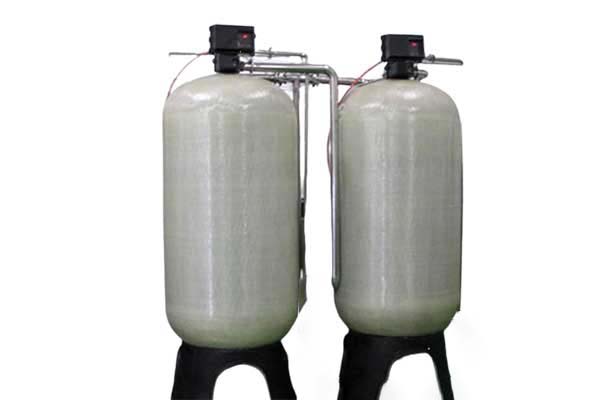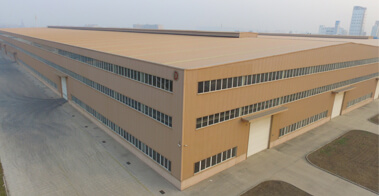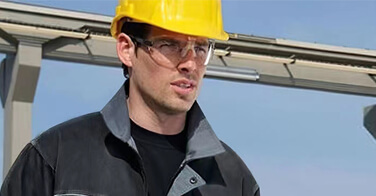Working Principle:
The water softener consists of two resin tanks (main tank and auxiliary tank), a hydraulic control valve, and a salt tank. The control valve controls the switching of the water circuit between the main tank and the auxiliary tank to ensure that one tank is always in working condition, while the other tank is in the state of regeneration or standby. The regenerated brine is sucked in by the negative pressure of the Venturi ejector installed in the valve, and the water for regeneration and cleaning is the softened effluent of the other tank. For different raw water hardness, different numbers of water dials are used to achieve corresponding working and regeneration cycles.
The hydraulic control valve uses the kinetic energy of the water flow to drive two sets of turbines to drive two sets of gears respectively to drive the rotation of the water gauge plate and the control plate. The water gauge plate accumulatively passes through the flow, and the control panel introduces the raw water pressure signal into a group of valve chambers through a group of holes, and opens or closes the pressure holes according to the set rule while rotating, so as to realize the automatic switching of a group of integrated valves.
Classification:
Fully automatic water softeners can be divided into various types, such as time control type, flow control type, and continuous soft water supply system type. These types can also be combined in various ways to meet different water needs of users. The flow type is designed for automatic regeneration based on set flow control, which can be adjusted according to the resin loading and water quality. The time type calculates the specific demand per hour based on the resin loading amount and water quality, and automatically controls regeneration by setting the time (the regeneration cycle can be set within 7 or 12 days, and the regeneration time can be selected arbitrarily within 24 hours).
Natural water can be classified into hard water and soft water: water that contains a large amount of calcium and magnesium ions (inorganic minerals) is called hard water, while water without these ions is called soft water. If the water's hardness is caused by the presence of sodium carbonate or magnesium bicarbonate, it is called temporary hard water. If the water's hardness is due to the presence of calcium and magnesium containing sulfate or chloride, it is called permanent hard water.
In simple terms, water with a calcium carbonate content of less than 10 mg/L is considered high-standard soft water. In developed western countries, soft water accounts for 90% of household water usage (including cooking, washing, bathing, etc.). Natural soft water sources include unpolluted rainwater, snow water, and dew.
Characteristics:
- High degree of automation and stable water supply conditions
- The fully automatic water softening equipment completes the cycle process of softening and regeneration automatically according to the preset program, with a high degree of automation and stable operating conditions. Daily operation requires no manual intervention except for adding salt.
- Accurate and reliable operation
- The advanced program control device enables accurate and reliable operation, replacing manual operation and fully realizing the automatic conversion of all links of water treatment.
- High efficiency, low consumption, and labor-saving
- The equipment has high efficiency and low energy consumption, resulting in economical operating costs. The reasonable overall design of the softener enables the full utilization of the resin's exchange capacity, and the equipment uses a jet-type salt suction instead of a salt pump, reducing energy consumption.
- Compact structure and small footprint, saving infrastructure investment
- The equipment has strong corrosion resistance. The tank body is pressure-resistant and corrosion-resistant, which is made of fiberglass reinforced plastics, engineering plastics, or stainless steel, which can prevent corrosion of the equipment by the regeneration agent. It has a compact structure and a small footprint, saving infrastructure investment.
- Flexible combination
- Flexible model selection includes single-tank, double-tank, and multi-tank systems; time and flow control methods; simultaneous regeneration, alternate regeneration, and other operating modes can be selected according to needs.
- Reliable performance and stable water quality
- It is easy to install and commission, use, and has stable performance of operating components, with convenient installation and commissioning, easy to use, and stable performance of operating components.
- Wide range of applications
- It can be widely used in boilers, heat exchange, central air conditioning and other systems, laundry equipment, food industry, textiles, and printing industries.
Application:
Widely used in various industrial and civil softened water system, such as boiler water supply, supplementary water for heating and air conditioning systems, textile printing and dyeing, paper mill, laundry, bathing, food processing, high-quality domestic water and other fields. The processing flow ranges from 0.3 to tens of tons per hour.







